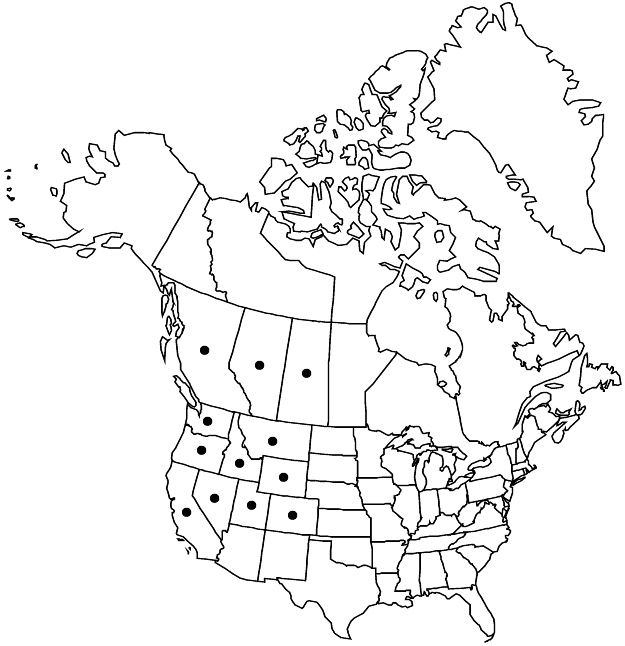familyRosaceae
subfamilyRosaceae subfam. Rosoideae
genusGeum
speciesGeum triflorum
varietyGeum triflorum var. ciliatum
Difference between revisions of "Geum triflorum var. ciliatum"
Rhodora 30: 207. 1928.
Endemic
Basionym: Geum ciliatum Pursh Fl. Amer. Sept. 1: 352. 1813
Synonyms: G. canescens (Greene) Munz G. triflorum var. campanulatum (Greene) C. L. Hitchcock G. triflorum var. canescens (Greene) Kartesz & Gandhi Sieversia campanulata (Pursh) G. Don S. canescens unknown S. ciliata unknown
FNA>Volume Importer |
FNA>Volume Importer |
||
| Line 11: | Line 11: | ||
|label=Endemic | |label=Endemic | ||
}} | }} | ||
| − | |basionyms={{Treatment/ID/ | + | |basionyms={{Treatment/ID/Basionym |
|name=Geum ciliatum | |name=Geum ciliatum | ||
|authority=Pursh | |authority=Pursh | ||
| + | |publication_title=Fl. Amer. Sept. | ||
| + | |publication_place=1: 352. 1813 | ||
}} | }} | ||
|synonyms={{Treatment/ID/Synonym | |synonyms={{Treatment/ID/Synonym | ||
| Line 71: | Line 73: | ||
|publication year=1928 | |publication year=1928 | ||
|special status=Endemic | |special status=Endemic | ||
| − | |source xml=https://jpend@bitbucket.org/aafc-mbb/fna-data-curation.git/src/ | + | |source xml=https://jpend@bitbucket.org/aafc-mbb/fna-data-curation.git/src/f6b125a955440c0872999024f038d74684f65921/coarse_grained_fna_xml/V9/V9_87.xml |
|subfamily=Rosaceae subfam. Rosoideae | |subfamily=Rosaceae subfam. Rosoideae | ||
|tribe=Rosaceae tribe Colurieae | |tribe=Rosaceae tribe Colurieae | ||
Revision as of 20:38, 24 September 2019
Basal leaves: larger leaflets cleft more than 1/2 their lengths. Inflorescences (1–)3–5(–7)-flowered. Fruiting styles: proximal segment persistent, 15–40 mm, pilose, distal segment tardily deciduous, 3–7 mm, apex not or ± hooked, glabrous or pilose on base. 2n = 42.
Phenology: Flowering late spring–early summer.
Habitat: Mountain meadows, grassy and rocky slopes, open coniferous and aspen woodlands, sagebrush scrub
Elevation: 60–3300 m
Distribution

Alta., B.C., Sask., Calif., Colo., Idaho, Mont., Nev., Oreg., Utah, Wash., Wyo.
Discussion
Selected References
None.
Lower Taxa
None.